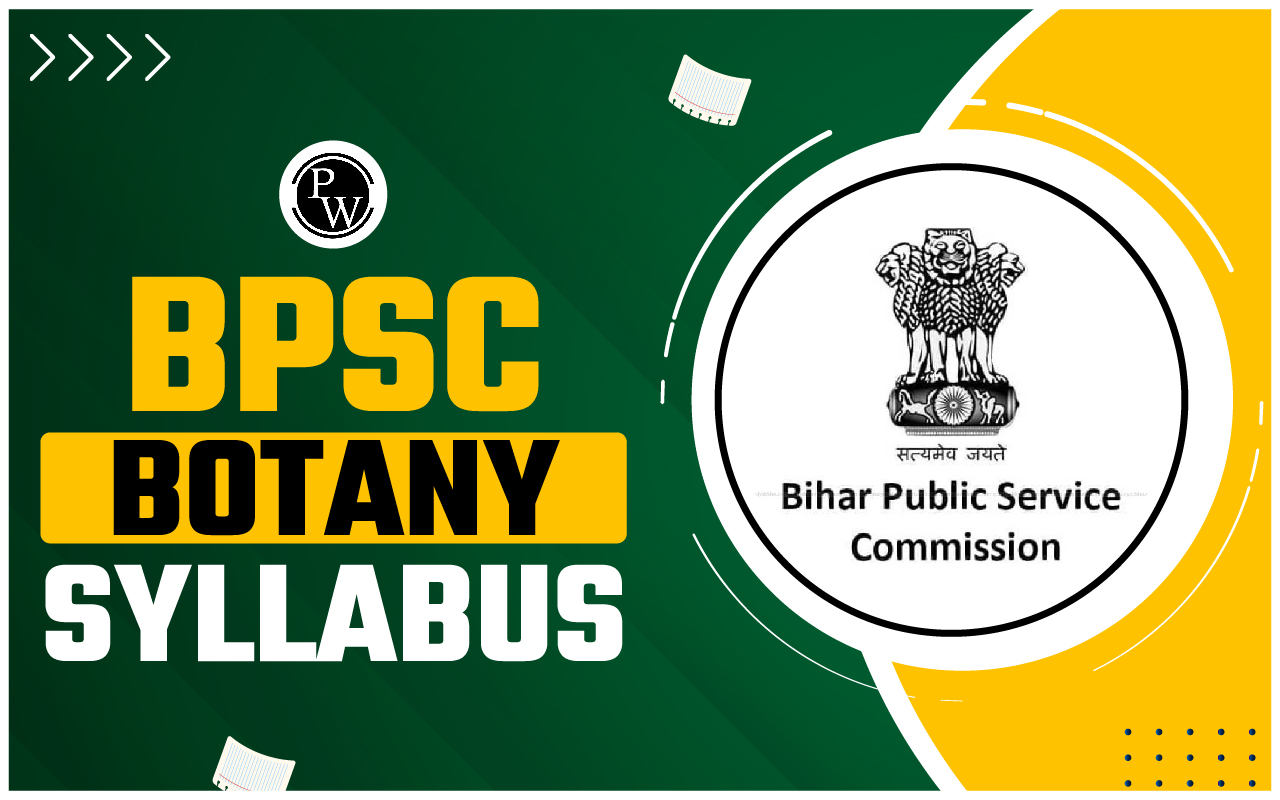

BPSC Botany Syllabus 2025: The Bihar Public Service Commission has made available on its official website the BPSC Botany Syllabus 2025 along with the BPSC 71st Notification. To understand the subjects and the sub-topics, applicants taking the exam must be familiar with the BPSC Syllabus as well as the exam pattern. To meet the cut-off, they must carefully review the syllabus and study.
The preliminary exam, major exam, and interview are all part of the BPSC 2025 selection process. Candidates can find information on the section-by-section syllabus, the exam format, and preparation advice in this post.BPSC Botany Syllabus 2025
The Bihar Public Service Commission has announced the BPSC Botany Syllabus 2025. Each year, hundreds of applicants take the BPSC Exam in hopes of being hired by the Bihar state government. General Hindi, General Studies 1 & 2, and Optional Subject are all covered in the syllabus. Each paper will last three hours, and the exam will be given for a total of 1000 marks. The BPSC Botany 2025 preliminary exam consists of two sections: I and II. In order to properly prepare with a study plan, students should read through this page to obtain details about the syllabus and exam pattern.BPSC Botany Syllabus
The candidates can go through the BPSC Botany Syllabus mentioned in the table given below for Section I and Section II. The syllabus majorly covers General studies with topics including Microbiology: bacteria, viruses, plasmids—structure and replication. An overview of immunology and infection. Microbes in the air, soil, and water; in industry, medicine, and agriculture. microorganisms used for pollution control. Pathology: Nematodes, bacteria, viruses, and mycoplasma fungi are the main causes of plant diseases in India. the physiology of parasitism, modes of infection, and strategies for control. The way that biocides work. poisons caused by fungi.BPSC Labor Botany Syllabus Section I
The Botany Syllabus is divided into three sections: Section I, Section II, and Section III. Every section is worth 100 points. Sections I and III must be completed. In Section II, candidates may offer either II-a or II-b. Applicants can review the BPSC Botany syllabus from the table given below.| BPSC Botany Syllabus | |
| Section | Topics |
| Section 1 |
|
BPSC Botany Syllabus 2025 Section II
The details of the BPSC Botany Syllabus Section II have been mentioned in the table given below. The candidates can learn about the topics and sub-topics here in this article to study efficiently for the upcoming examination.| BPSC Botany Syllabus | |
| Section | Topics |
| Section II |
|
BPSC Botany Exam Pattern 2025
The candidates can go through the BPSC Botany Exam Pattern 2025 from the table given below. The prelims exam includes general studies which is qualifying in nature for 100 marks. The main exam is for 900 marks with a duration of 3 hours per paper.| BPSC Botany Exam Pattern 2025 | ||
| Subject | Total Marks | Time |
| General Hindi (Prelims) | 100 | 3 Hours |
| General Studies 1 | 300 | 3 Hours |
| General Studies 2 | 300 | 3 Hours |
| Optional Subject | 300 | 3 Hours |
| Total | 1000 | 3 Hours/Paper |
BPSC Botany Preparation Tips
The BPSC Botany Preparation Tips have been mentioned below for the candidates.- Candidates should select an optional subject based on their interests and familiarity with its fundamentals, which can aid in achieving high scores.
- It is important for candidates to thoroughly grasp the BPSC Botany syllabus and exam pattern to understand the marking scheme.
- By solving previous years' BPSC Botany papers, candidates can gain a precise understanding of the exam pattern and marking scheme.
- This practice will also enable candidates to identify common mistakes, rectify them, and enhance their speed, accuracy, and confidence in solving questions.
| Other Related Links of BPSC Exam 2025 | |
| BPSC Notification | BPSC Salary |
| BPSC Selection Process | BPSC Syllabus |
| BPSC Previous Year Question Paper | BPSC Eligibility Criteria |
| BPSC Cut Off | |
BPSC Botany Syllabus 2025 FAQs
Q1. Which is the easiest optional subject for BPSC?
Ans. The top optional subjects for BPSC are History, Hindi Language and Literature, Labour and Social Welfare, Public Administration, and Geography.
Q2. How many attempts are there in BPSC?
Ans. The Number of Attempts is 3 and the Relaxation in Upper Age Limit: 5 years.
Q3. Which is tougher Zoology or botany in BPSC?
Ans. While dealing with theory, Zoology is way more easier to understand and reciprocate during exams as compared to Botany. On the other hand, practical's in Botany is easier than Zoology.
Q4. Can I crack BPSC in the first attempt?
Ans. Yes, You Can Crack the BPSC in the First Attempt with dedication, discipline, and a strategic approach.
🔥 Trending Blogs
Check out these Related Articles
Free Learning Resources
PW Books
Notes (Class 10-12)
PW Study Materials
Notes (Class 6-9)
Ncert Solutions
Govt Exams
Class 6th to 12th Online Courses
Govt Job Exams Courses
UPSC Coaching
Defence Exam Coaching
Gate Exam Coaching
Other Exams
Know about Physics Wallah
Physics Wallah is an Indian edtech platform that provides accessible & comprehensive learning experiences to students from Class 6th to postgraduate level. We also provide extensive NCERT solutions, sample paper, NEET, JEE Mains, BITSAT previous year papers & more such resources to students. Physics Wallah also caters to over 3.5 million registered students and over 78 lakh+ Youtube subscribers with 4.8 rating on its app.
We Stand Out because
We provide students with intensive courses with India’s qualified & experienced faculties & mentors. PW strives to make the learning experience comprehensive and accessible for students of all sections of society. We believe in empowering every single student who couldn't dream of a good career in engineering and medical field earlier.
Our Key Focus Areas
Physics Wallah's main focus is to make the learning experience as economical as possible for all students. With our affordable courses like Lakshya, Udaan and Arjuna and many others, we have been able to provide a platform for lakhs of aspirants. From providing Chemistry, Maths, Physics formula to giving e-books of eminent authors like RD Sharma, RS Aggarwal and Lakhmir Singh, PW focuses on every single student's need for preparation.
What Makes Us Different
Physics Wallah strives to develop a comprehensive pedagogical structure for students, where they get a state-of-the-art learning experience with study material and resources. Apart from catering students preparing for JEE Mains and NEET, PW also provides study material for each state board like Uttar Pradesh, Bihar, and others
Copyright © 2025 Physicswallah Limited All rights reserved.
Get App










